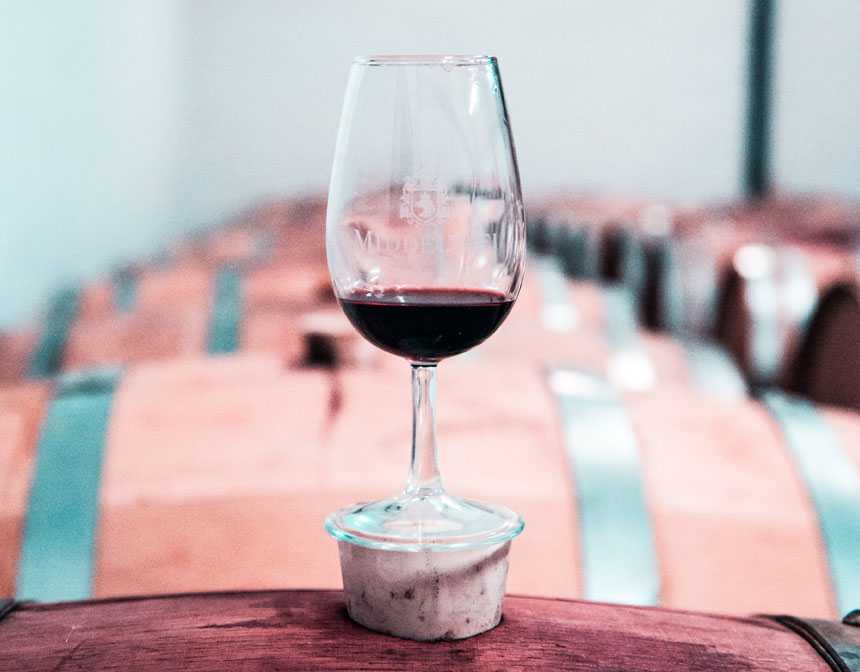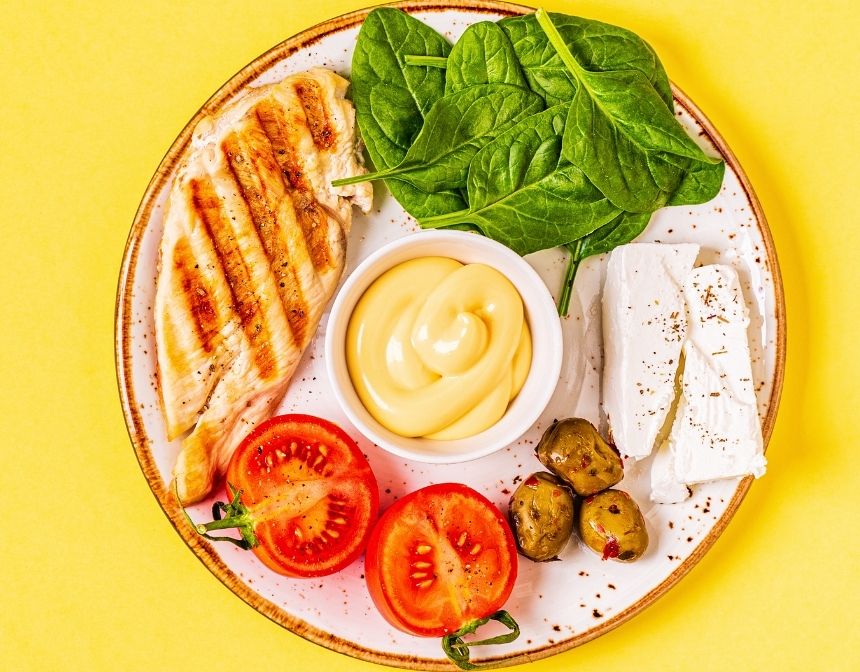What Is The Trick To Making Pancakes Fluffy?
The trick to making pancakes fluffy lies in the batter and the cooking process. Here are a few key points to remember:
Don't Overmix the Batter: When you overmix, you end up developing gluten in the batter which can result in pancakes that are tougher and denser. It's okay if there are some lumps remaining in your batter.
Use a Leavening Agent: Ingredients like baking powder and baking soda help to make pancakes fluffy. They create air bubbles when they react with other ingredients, and these bubbles get trapped in the batter as it cooks, leading to fluffiness.
Let the Batter Rest: Allowing the pancake batter to rest for a few minutes before cooking can make a big difference. The resting time allows the flour to absorb the liquid and the baking powder to start working, leading to fluffier pancakes.
Cook on a Preheated Pan or Griddle: Pour the batter onto a hot surface. This helps the pancakes start cooking immediately and promotes even browning and a fluffy interior.
Flip Only Once: Wait until you see bubbles on the surface of the pancake before you flip it. Flipping it multiple times can deflate the pancake, resulting in less fluffiness.
Remember, practice makes perfect, so don't worry if your first few pancakes don't turn out as fluffy as you'd like. Keep refining your technique and you'll be a pro in no time.
Why Are My Pancakes Not Fluffy?
If your pancakes are not turning out as fluffy as you'd like, there could be several reasons:
Overmixing the Batter: If you stir the batter too much, you can develop the gluten in the flour, making your pancakes tougher rather than fluffy.
Not Enough Leavening Agent: Not using enough baking powder or baking soda can prevent your pancakes from rising properly.
Old Baking Powder or Baking Soda: These leavening agents lose their effectiveness over time. If you've had yours for a while, it might be time to replace them.
Flipping Too Early or Too Often: Pancakes should only be flipped once, and only when they're ready. Look for bubbles on the surface of the pancake and a bit of dryness around the edges.
Not Letting the Batter Rest: A rest period of about 5-10 minutes allows the gluten in the batter to relax and the starch grains to swell. This can lead to a more tender, fluffy pancake.
Pan Temperature: If your pan is too hot, the pancake might brown on the outside more quickly than it cooks on the inside, resulting in a less-than-fluffy texture. On the other hand, if the pan is not hot enough, the pancake will take too long to cook and can turn out dense.
Adjusting these factors should help improve the fluffiness of your pancakes.
Does Baking Soda Fluff Up Pancakes?
Yes, baking soda can contribute to making pancakes fluffy. It's a chemical leavening agent that produces carbon dioxide gas when combined with an acid and heated. This gas gets trapped within the batter as it cooks, causing it to rise and resulting in a fluffy pancake.
However, it's important to note that using baking soda alone can leave a slightly soapy aftertaste because of its basic nature. This is why recipes often call for an acidic ingredient like buttermilk, yogurt, or lemon juice when baking soda is used. These acidic ingredients react with the baking soda, neutralizing its flavor.
If your recipe doesn't include an acidic ingredient, you may want to use baking powder instead. Baking powder contains both baking soda and the acid needed for the reaction, so it won't leave a soapy taste, even in recipes without added acid.
As a final note, remember that using too much baking soda or baking powder can make your pancakes taste bitter, and using too little can prevent them from rising properly. It's important to measure these ingredients carefully.
What Ingredient Allow The Pancakes To Puff Up?
Leavening agents like baking powder or baking soda are the ingredients that allow pancakes to puff up. These substances create gas bubbles in the batter that expand when heated, causing the pancakes to rise.
Here's how they work:
Baking Powder: Baking powder is a mixture of a carbonate or bicarbonate (like baking soda) and a weak acid (such as cream of tartar). When baking powder is mixed with the wet ingredients, it forms bubbles of carbon dioxide gas. The heat of the cooking process then causes these bubbles to expand, making the pancakes puff up.
Baking Soda: Baking soda (sodium bicarbonate) is a base that produces carbon dioxide gas when combined with an acid like buttermilk, yogurt, or vinegar. This is why many pancake recipes that use baking soda also include an acidic ingredient. Like with baking powder, the bubbles of gas expand with heat, causing the pancakes to rise.
For optimal fluffiness, be sure to mix the batter just until the dry ingredients are moistened - overmixing can lead to dense pancakes. And make sure to cook them as soon as the batter is mixed, because the leavening action starts as soon as the baking powder or soda come into contact with the liquid ingredients.
Fluffy Pancakes vs Japanese Fluffy Pancakes
Japanese Fluffy Pancakes and traditional Fluffy Pancakes, while both known for their airy and light texture, have some distinct differences in terms of ingredients, preparation, and appearance.
Traditional Fluffy Pancakes:
Ingredients: Traditional fluffy pancakes typically consist of all-purpose flour, baking powder, eggs, milk, sugar, and a bit of melted butter or oil. Some recipes may also include buttermilk for added tanginess and tenderness.
Preparation: The batter for traditional fluffy pancakes is more liquid in consistency compared to Japanese pancakes. It can be easily poured onto a griddle or pan without the use of pancake rings.
Cooking Method: Traditional fluffy pancakes are cooked over medium-high heat on a griddle or stovetop, resulting in a golden brown exterior and a soft and fluffy interior.
Appearance: Traditional fluffy pancakes are thinner compared to Japanese fluffy pancakes. They have a more classic pancake appearance with a round shape and a slightly puffed surface.
Japanese Fluffy Pancakes:
Ingredients: Japanese fluffy pancakes often include a combination of cake flour, baking powder, eggs (separated into yolks and whites), milk, and a touch of sugar and vanilla extract. The key to their fluffiness lies in the use of whipped egg whites, which are gently folded into the batter to create a soufflé-like consistency.
Preparation: The batter for Japanese fluffy pancakes is typically thicker than that of traditional pancakes, and the pancakes are cooked in metal pancake rings to help them maintain their tall, round shape during cooking.
Cooking Method: To achieve their signature height, Japanese fluffy pancakes are cooked over low heat on a stovetop with a lid placed over the pan to trap steam. This slow cooking process ensures that the pancakes rise evenly and become light and airy.
Appearance: Japanese fluffy pancakes are much thicker and taller than traditional fluffy pancakes, often reaching a height of about 2 inches or more. They have a soft and jiggly texture, resembling a cross between a pancake and a soufflé.
What To Serve with Fluffy Vegan Pancakes?
Fluffy vegan pancakes are a versatile and delicious breakfast option that pairs well with a variety of toppings and side dishes. Here are some ideas on what to serve with fluffy vegan pancakes:
Fresh Fruits: Top your pancakes with an assortment of fresh fruits such as berries, sliced bananas, peaches, or kiwi. The natural sweetness and vibrant colors of the fruits complement the pancakes perfectly.
Nut Butters: Spread almond butter, peanut butter, or cashew butter on top of the pancakes for a creamy and nutty flavor. Nut butters add protein and healthy fats to the meal.
Maple Syrup: Drizzle a generous amount of pure maple syrup over the pancakes for classic sweetness and a touch of indulgence.
Vegan Whipped Cream: Serve your pancakes with a dollop of vegan whipped cream for added creaminess and a luxurious treat.
Vegan Chocolate Sauce: Satisfy your sweet tooth by drizzling vegan chocolate sauce over the pancakes. The combination of chocolate and fluffy pancakes is heavenly.
Vegan Ice Cream: For a delightful dessert-like breakfast, serve your pancakes with a scoop of vegan ice cream. It's a treat for those special occasions.
Vegan Cheese: Explore savory options by topping your pancakes with a slice of vegan cheese or a vegan cream cheese spread.
Vegan Tofu Scramble: Pair your pancakes with tofu scramble for a more filling and well-rounded breakfast.
Berry Compote: Simmer fresh or frozen mixed berries with a bit of sugar to create a delicious compote to drizzle over the pancakes.
Origins of Pancakes
Pancakes, in one form or another, have been a staple in kitchens around the world for centuries. The concept of a fluffy, round, flat cake cooked on a hot surface is universal and each culture has its own unique take on it.
The term "pancake" itself first appeared in English in the 15th century. However, versions of this breakfast favorite were already well established in other cultures. Ancient Greeks and Romans ate pancakes sweetened with honey. In France, they evolved into thin crepes, while American pioneers preferred thicker, smaller "flapjacks" or "hotcakes". Regardless of the variation, the basic principle remained the same: a simple, quick-to-cook, bread-like food that could be eaten any time of the day.
As for the fluffy vegan pancakes in our recipe, they reflect the modern shift towards plant-based diets. This version caters to dietary restrictions or choices, such as avoiding animal products or gluten, without sacrificing the classic comfort of a warm pancake. The incorporation of gluten-free flour and the absence of dairy and eggs are a nod to contemporary dietary trends, proving that everyone can enjoy this timeless dish. While pancakes have an ancient and global history, this recipe adds a new twist to their diverse heritage. So, not only are you whipping up a delightful breakfast dish, but you're also participating in the ongoing evolution of a culinary tradition that stretches back thousands of years.









































